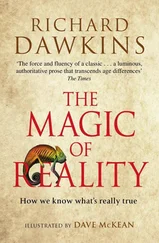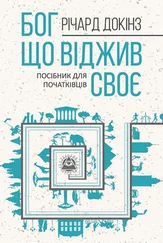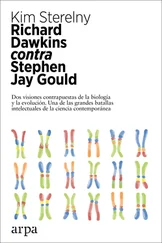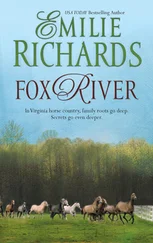The model of ancestry that led to our erroneously inflated calculation of ancestral numbers was an ever-branching tree, branching and branching again. Turned the other way up, and equally wrong, is a tree model of descent. A typical individual has two children, four grandchildren, eight greatgrandchildren and so on down to impossible trillions of {36} descendants a few centuries hence. A far more realistic model of ancestry and descent is the flowing river of genes, which we introduced in the previous chapter. Within its banks, the genes are an ever-rolling stream through time. Currents swirl apart and join again as the genes crisscross down the river of time. Draw out a bucketful at intervals from points spaced out down the length of the river. Pairs of molecules in a bucket will have been companions before, at intervals during their progress down the river, and they will be companions once more. They have also been widely separated in the past, and they will be widely separated again. It is hard to trace the points of contact, but we can be mathematically certain that the contacts happen – mathematically certain that if two genes are out of contact at a particular point, we won't have to travel far in either direction along the river until they touch again.
You may not know that you are a cousin of your husband, but it is statistically likely that you won't have to go far back in your ancestry until you meet a junction with his lineage. Looking in the other direction, toward the future, it might seem obvious that you have a good chance of sharing descendants with your husband or wife. But here is a much more arresting thought. Next time you are with a large group of people – say, in a concert hall or at a football match – look around at the audience and reflect upon the following: if you have any descendants at all in the distant future, there are probably people at the same concert whose hands you could shake as coancestors of your future descendants. Cograndparents of the same children usually know they are coancestors, and this must give them a certain feeling of affinity whether or not they get on personally. {37} They can look at each other and say, “Well, I may not like him much, but his DNA is mingled with mine in our shared grandchild, and we can hope to share descendants into the future, long after we're gone. Surely this creates a bond between us.” But my point is that, if you are blessed with distant descendants at all, some of the perfect strangers at the concert hall will probably be your coances-tors. You can survey the auditorium and speculate about which individuals, male or female, are destined to share your descendants and which are not. You and I, whoever you are and whatever your color and sex, may well be coancestors. Your DNA may be destined to mingle with mine. Salutations!
Now suppose we travel back in a time machine, perhaps to a crowd in the Colosseum, or farther back, to market day in Ur, or even farther still. Survey the crowd, just as we imagined for our modern concert audience. Realize that you can divide these long-dead individuals into two and only two categories: those who are your ancestors and those who are not. That is obvious enough, but now we come to a remarkable truth. If your time machine has taken you sufficiently far back, you can divide the individuals you meet into those who are ancestors of every human alive in 1995 and those who are the ancestors of nobody alive in 1995. There are no intermediates. Every individual you set eyes on when you step outside your time machine is either a universal human ancestor or not an ancestor of anybody at all.
This is an arresting thought, but it is trivially easy to prove. All you have to do is move your mental time machine back to a ludicrously long time ago: say, to three hundred fifty {38} million years ago, when our ancestors were lobe-finned fishes with lungs, emerging from the water and becoming amphibians. If a particular fish is my ancestor, it is inconceivable that he is not your ancestor too. If he were not, this would imply that the lineage leading to you and the lineage leading to me had independently, without cross-reference, evolved from fish through amphibian, reptile, mammal, primate, ape and hominid, ending up so similar that we can talk to each other and, if we are of opposite sex, mate with each other. What is true of you and me is true of any pair of humans.
We have proved that if we travel sufficiently far back in time, every individual we encounter must be the ancestor either of all of us or of none of us. But how far is sufficiently far? We clearly don't need to go back to lobe-finned fishes – that was the reductio ad absurdum – but how far do we have to go back until we come to a universal ancestor of every human alive in 1995? That's a much more difficult question, and it is the one to which I next want to turn. This one cannot be answered from the armchair. We need real information, measurements from the hard world of particular facts.
Sir Ronald Fisher, the formidable English geneticist and mathematician, who could be regarded as Darwin's greatest twentieth-century successor as well as the father of modern statistics, had this to say in 1930:
It is only the geographical and other barriers to sexual intercourse between different races… which prevent the whole of mankind from having had, apart from the last thousand years, a practically identical ancestry. The ancestry of members of the same nation can differ little beyond the last 500 years; at 2000 years the only differences that would seem to remain would be {39} those between distinct ethnographic races; these… may indeed be extremely ancient; but this could only be the case if for long ages the diffusion of blood between the separated groups was almost non-existent.
In the terms of our river analogy, Fisher is, in effect, making use of the fact that the genes of all the members of one geographically united race are flowing down the same river. But when it came to his actual figures – five hundred years, two thousand years, the antiquity of the separation of different races – Fisher had to have been making educated guesses. The relevant facts were not available in his time. Now, with the molecular-biology revolution, there is an embarrassment of riches. It is molecular biology that has given us the charismatic African Eve.
The digital river is not the only metaphor that has been used. It is tempting to liken the DNA in each one of us to a family Bible. DNA is a very long piece of text, written, as we saw in the previous chapter, in a four-letter alphabet. The letters have been scrupulously copied from our ancestors, and only from our ancestors, with remarkable fidelity even in the case of very remote ancestors. It should be possible, by comparing the texts preserved in different people, to reconstruct their cousinship and work back to a common ancestor. Distant cousins, whose DNA has had more time to diverge – say, Norwegians and Australian aborigines – should differ in a larger number of words. Scholars do this kind of thing with different versions of biblical documents. Unfortunately, in the case of DNA archives, there is a snag. Sex.
Sex is an archivist's nightmare. Instead of leaving ancestral texts intact but for an occasional inevitable error, sex {40} wantonly and energetically wades in and destroys the evidence. No bull ever abused a china shop as sex abuses the DNA archives. There is nothing like it in biblical scholarship. Admittedly, a scholar seeking to trace the origins of, say, the Song of Solomon is aware that it is not quite what it seems. The Song has oddly disjointed passages, suggesting that it is really fragments of several different poems, only some of them erotic, stitched together. It contains errors – mutations – especially in translation. “Take us the foxes, the little foxes, that spoil the vines” is a mistranslation, even though a lifetime's repetition has given it a haunting appeal of its own, which is unlikely to be matched by the more correct “Catch for us the fruit bats, the little fruit bats…”:
Читать дальше












